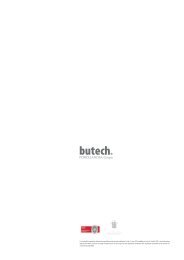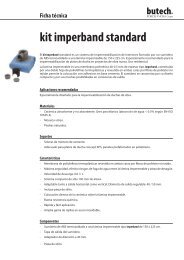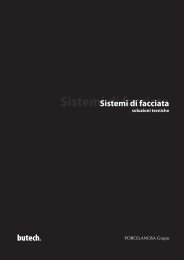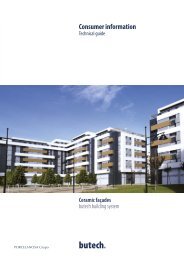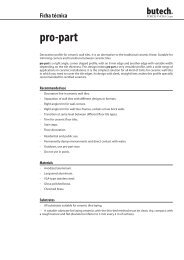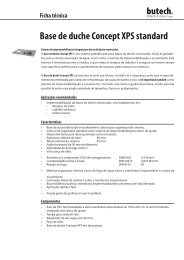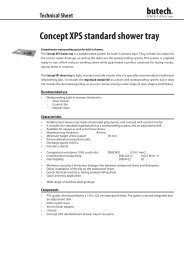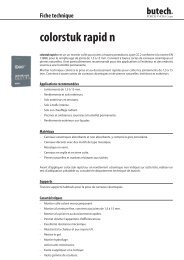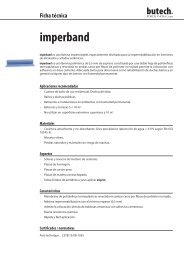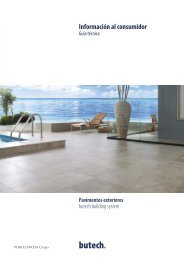You also want an ePaper? Increase the reach of your titles
YUMPU automatically turns print PDFs into web optimized ePapers that Google loves.
aised access flooring<br />
Raised access flooring (RAF) was created in response to the need to hide large volumes of cables, pipework, tubing, etc.<br />
that are typically found in offices, technical rooms, and other locations.<br />
The installation of a <strong>raised</strong> floor creates a space under the floor where all these services, including equipment and room<br />
cooling systems, can be neatly housed and hidden away.<br />
designed to be installed in:<br />
Facilities with a high volume of services or in rooms that house technical equipment that requires special ventilation.<br />
Commercial applications: offices, libraries, museums, schools, shopping centres, etc.<br />
Technical applications: telecommunications/electricity plants, control rooms, laboratories, data centres, etc.<br />
advantages<br />
• Ability to hide away all types of ugly and dangerous cables, pipes etc under the floor.<br />
• Improved installation efficiency in comparison to conventional <strong>floors</strong> (installation rate of about 40 m 2 /day).<br />
• Easy to take with you when relocating offices.<br />
• Option of rerouting services following installation of floor.<br />
advantages over other <strong>raised</strong> access floor systems<br />
• Able to withstand a high mechanical load.<br />
• The potential for combining different structures, as required in each particular case.<br />
• A high resistance to fire under laboratory tests.<br />
• Very low dimensional tolerances, between +0,1 and -0,2 mm. This means that the panels can easily be<br />
interchanged.<br />
• Cores made of high-performance materials with very high densities.<br />
• Compliance with UNE EN ISO 9001, guaranteeing quality controls during each stage of the manufacturing process.<br />
• On the top surface, any 60 x 60 ceramic tile by Porcelanosa or other non-ceramic coverings (plastic laminate,<br />
linoleum, vinyl, granite, aluminium, steel, carpet, parquet etc) can be used.<br />
• Tiles protected by a plastic surround to prevent the edges from breaking.<br />
• A wide range of complementary products to ensure a good finish.<br />
4



